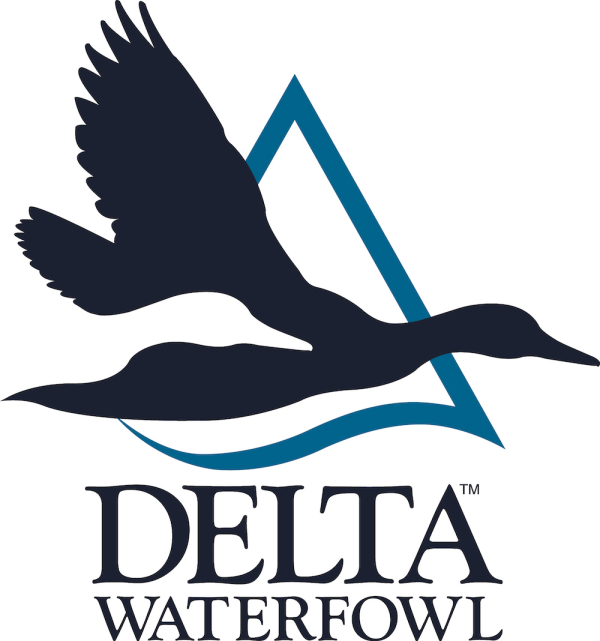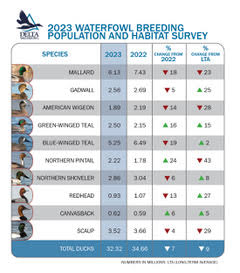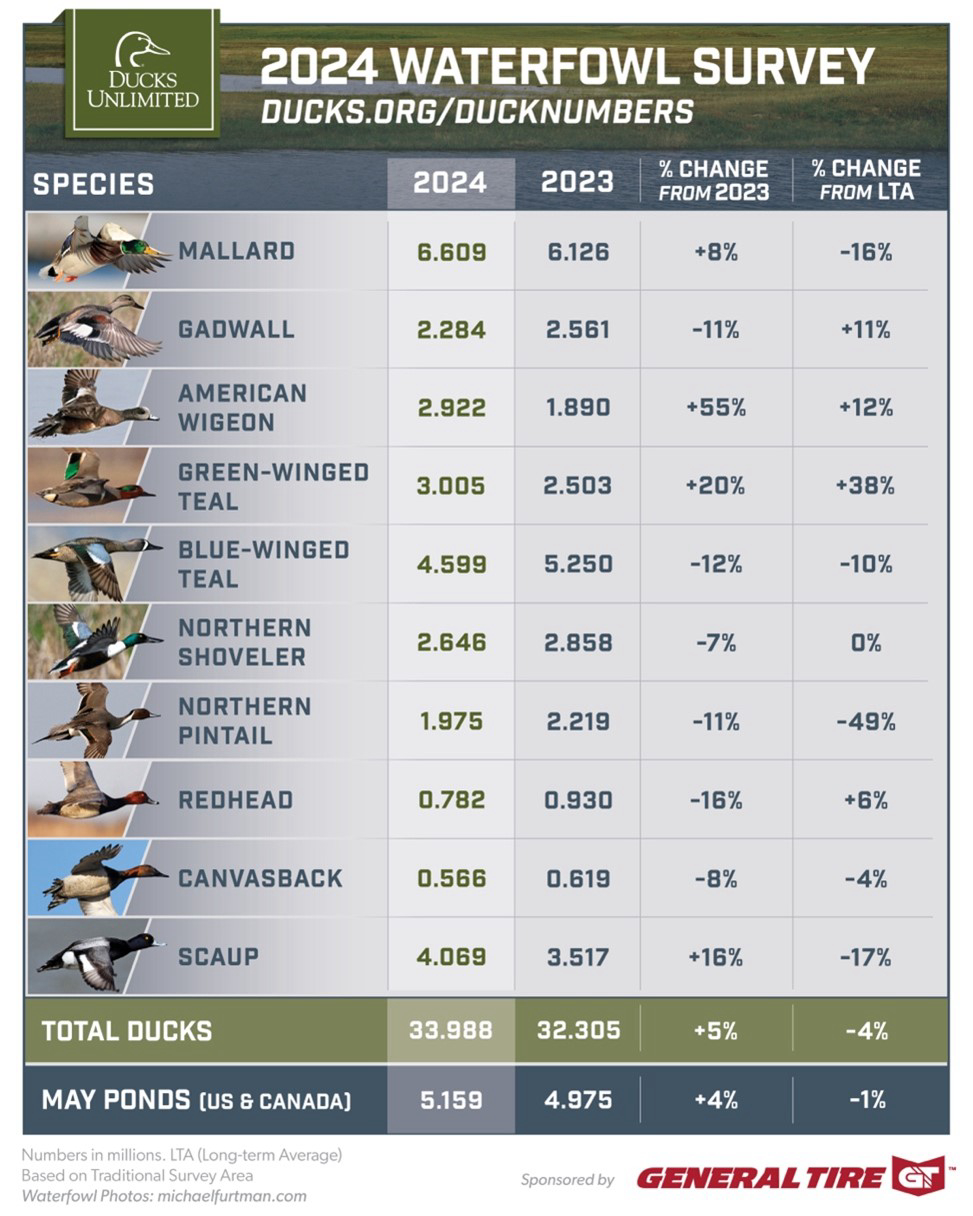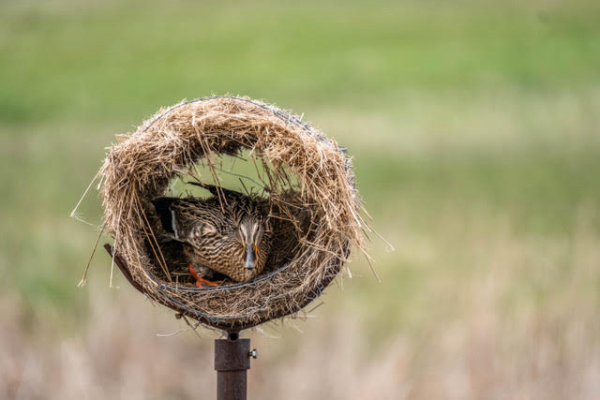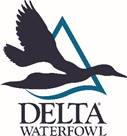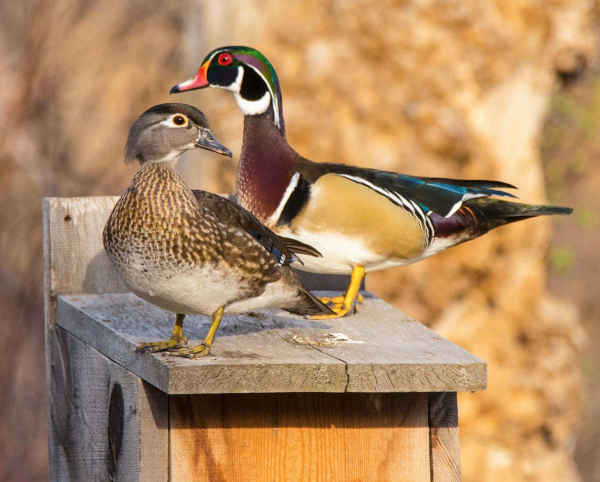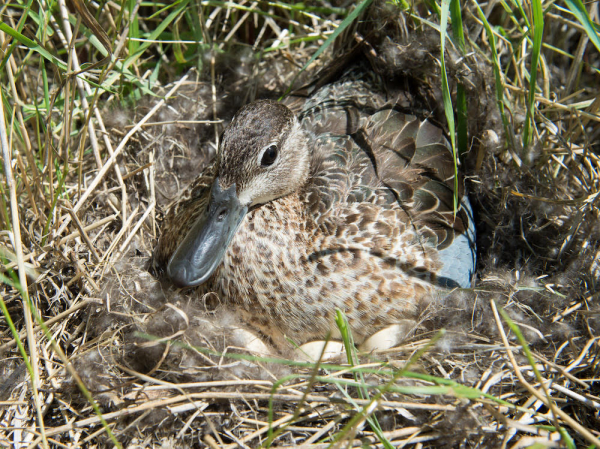Delta Waterfowl Expands Hen House Program into South Dakota to Produce More Ducks
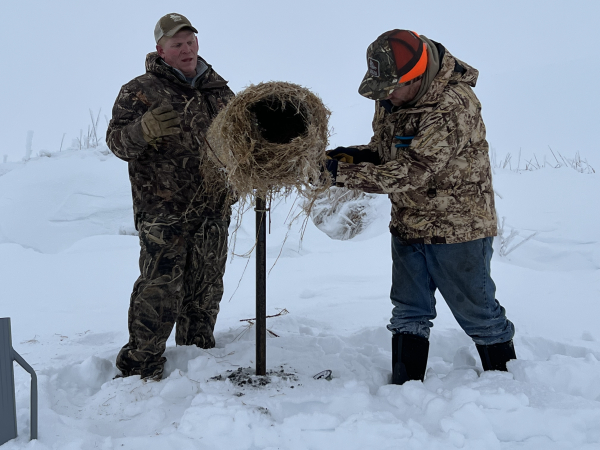
The Duck Hunters Organization is adding more than 2,000 nest structures in key duck breeding areas this winter
BISMARCK, NORTH DAKOTA — Working amidst waist-deep snowdrifts, Jason Mix-Schneider made history for Delta Waterfowl on a frozen slough in South Dakota earlier this winter.
A cattle rancher by trade, Mix-Schneider is one of three newly hired Hen House delivery specialists installing nest structures in South Dakota as part of a major duck production expansion for Delta Waterfowl. By pounding in stakes, attaching cradles and positioning nest tunnels in early January, he erected Delta’s first program Hen Houses in the state.
Matt Chouinard, senior waterfowl programs manager for Delta, brought a trailer-load to Mix-Schneider’s Veblen, South Dakota ranch, then provided expert instruction and guidance for the first few structures.
“Looks good,” Chouinard said as Mix-Schneider fluffed the flax nesting material to complete the task. “Congratulations Jason. You just installed the first-ever Delta Hen House in South Dakota.”
Thanks to a generous gift from John Dale of Waubay, South Dakota, Delta will place 515 Hen Houses in the state, all of them ready to keep nesting hen mallards out of the reach of mammalian predators. Hen Houses have proved to dramatically boost nest success, the key driver of duck populations throughout the prairie pothole region.
The South Dakota nest structures are large portion of the 2,075 new Hen Houses that Delta will put into service this winter. Delta delivery specialists are erecting 450 in Manitoba, 400 in Saskatchewan, 300 in Alberta and 210 in North Dakota. Another 200 Hen Houses are going in as part of graduate research in California’s Central Valley.
“It’s the largest year-over-year growth in the history of Hen Houses — more than 20 percent,” Chouinard said excitedly. “And we’re just getting started to really ramp up the impact of Hen Houses across the PPR.”
With the additions, Delta’s Hen House Program will have more than with more than 11,700 nest structures in place for the 2023 nesting season in key breeding areas for mallards, including Alberta, Saskatchewan, Manitoba, Ontario, North Dakota, South Dakota, Minnesota, Iowa, Pennsylvania and Colorado.
Delta Waterfowl is dramatically ramping up the organization’s efforts to produce ducks. In July 2022, Delta announced the ambitious Million Duck Campaign, a $250 million fundraising effort with a goal of adding 1 million ducks to the fall flight every year. At full maturity, the Million Duck Campaign will result in more than 110,000 Hen Houses welcoming hen mallards all across the breeding grounds of North America every spring.
“The areas where we can place Hen Houses are almost limitless,” said Joel Brice, chief conservation officer of Delta Waterfowl. “Hen Houses function beautifully on farms and ranches, and they’re efficient. Most importantly, they produce a lot of mallards, the most popular duck among hunters in North America.”
Behind the scenes, Delta’s program team is sourcing steel, wire and flax straw, as well as assembling a network of people to cut posts, weld cages and roll nest tunnels. And of course, getting the materials out to Delta’s growing army of delivery specialists such as Mix-Schneider.
Each link in the chain is important to meet Delta’s duck production goals.
“Everything it’s going to take to deliver duck production under the Million Duck Campaign is attainable,” Brice said. “We’re working to scale up delivery. It’s really a matter of logistics and money. We’re excited to expand the impact of Delta’s Hen House Program to produce more ducks.”
Delta Waterfowl is The Duck Hunters Organization, a leading conservation group working to produce ducks and secure the future of waterfowl hunting in North America. Visit deltawaterfowl.org.
For more information about Delta’s innovative Hen House Program, contact Matt Chouinard at mchouinard@deltawaterfowl.org or (701) 222-8857 ext. 5209.

